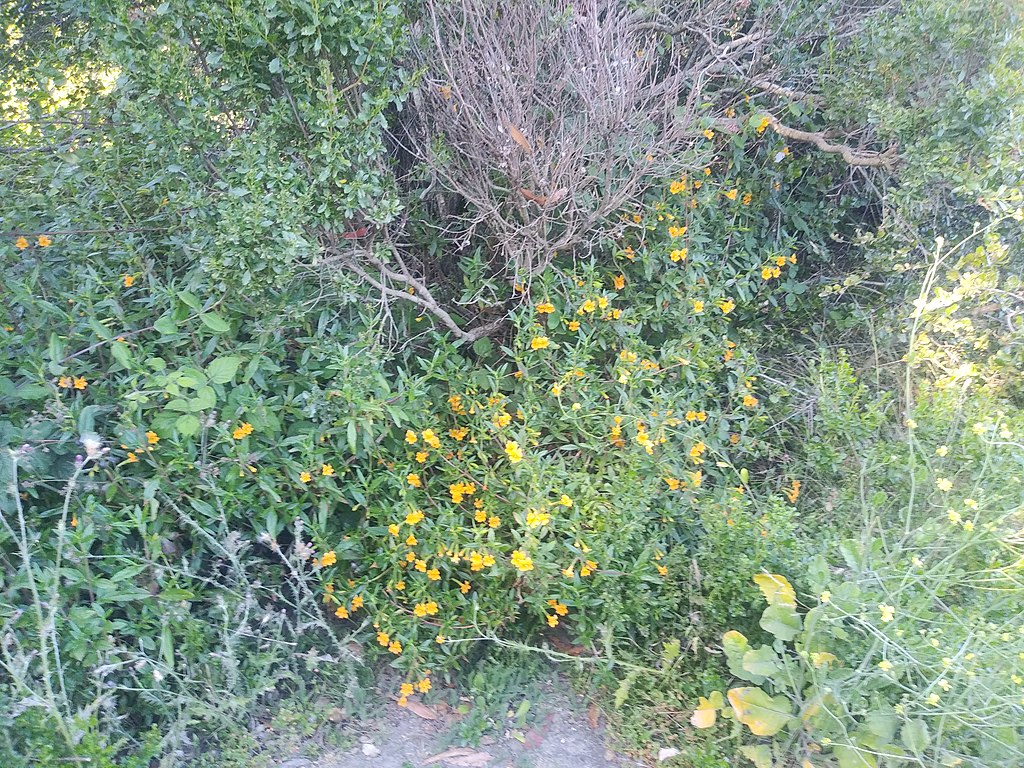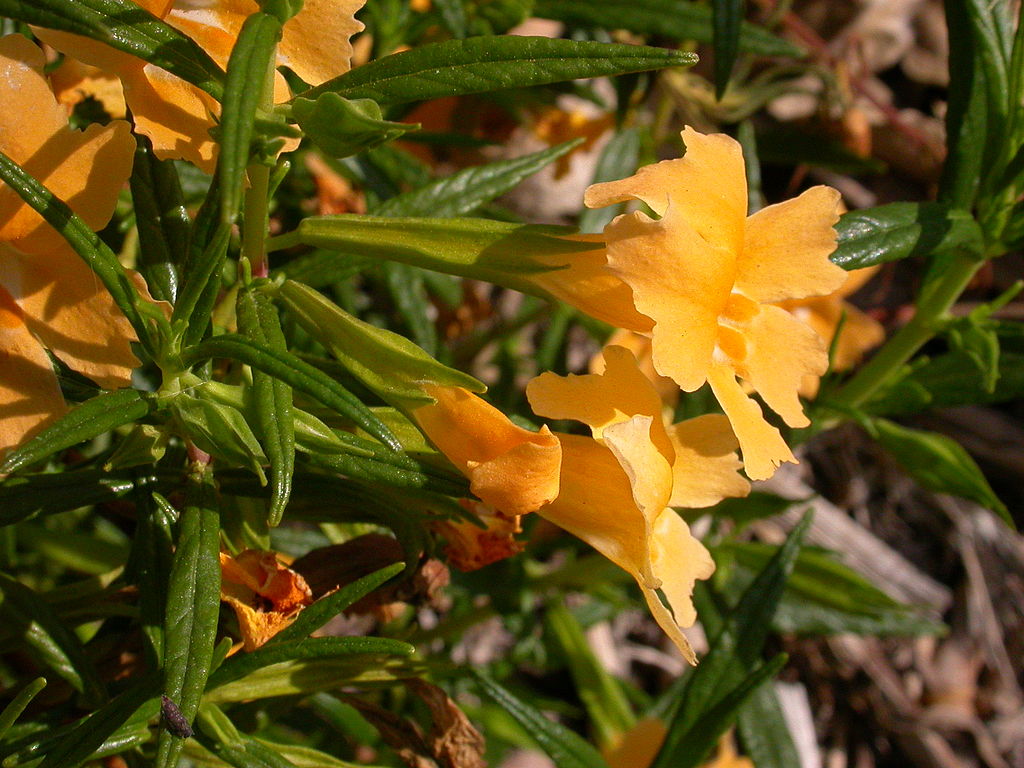
Native to southwestern North America from southwestern Oregon south through most of California, to Baja California, this evergreen subshrub is a member of the lopseed family, Phrymaceae, a small family that includes duckweed. The plant grows up to 5′ tall and has sticky stems and dark green, lanceolate, leaves that are 2-3″ long and exude a resin that makes them feel sticky. From early spring to mid summer, tubular flowers appear. They are 1.2″ long and have 5 petals that are united into a 2-lipped tube with 2 petals up above and 3 below. The flowers are yellow to orange and red and are pollinated by hummingbirds and bees. The plant is also an important host plant for the larvae of the common buckeye butterfly and the variable checkerspot. Although drought tolerant and and attractive in spring, the plants may drop their leaves during the summer so are best sited as a background plant. The genus name, Diplacus, comes from the Greek di, meaning two and plakos, meaning flat round plate . The specific epithet, aurantiacus, is the Latin word meaning orange, and refers to the most common flower color. Photo Credit Ndolkah Wikimedia Commons

Type: Evergreen subshrub
Outstanding Feature: Flowers
Form: Mounding, spreading
Growth Rate: Moderate
Bloom: Yellow to orange and red tubular flowers from early spring to mid summer
Size: 3-5′ H x 5′ W
Light: Full to part sun
Soil: Rocky to sandy, dry to medium moist, well-drained; very drought tolerant
Hardiness: Zones 7-11
Care: Pinch back in spring to encourage bushiness; deadhead to prolong bloom
Pests and Diseases: None of significance
Propagation: Seed
Outstanding Selections:
‘Jelly Bean Red’
Photo Credit: Curtis Clark Wikimedia Commons